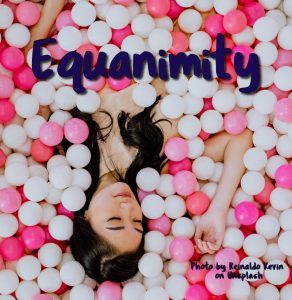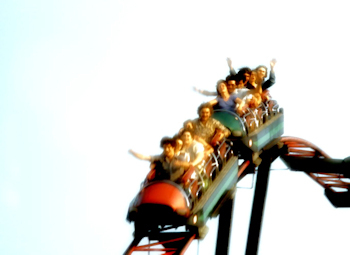Equanimity

Equanimity — we all have issues dealing with our ‘pet’ emotions — mostly, we want them gone. Not possible. Equanimity in the face of them — possible!

Psst! Hey!
** Want more great writing designed to help YOU to shift your behaviour?
** Want to learn how to find, build or deepen your principal relationship?
** Want to know more about Zen living and being?

I’ve been pretty good at dealing with my emotions… but!
Many moons ago I decided to get over being the “angry little man,” as one of my supervisors called me. With a lot of effort, I learned not to respond to anger with anger.
The weird (yet obvious) piece is that I still feel anger, despite years of meditation practice.
It’s weird because I know better than to think that any of my emotions are gone.
Let’s begin by looking at equanimity. I borrowed the term’s usage from a book called “The Science of Enlightenment”, by Shinzen Young,
Young writes that equanimity is the art of having our thoughts and feelings — the art of feeling them fully, expressing them, and then simply letting them go, without judgement.
I think we get it into our heads that we’re supposed to be “getting past” our feelings, emotions — past the stuff that we judge to be “baser” or beneath us (enlightened beings that we think we are.) We get our shorts twisted into a knot, then we work hard to stuff the feeling, and then we get all over ourselves for feeling it in the first place.
Sound familiar?
Young recommends releasing what we feel.
He mentions Zen masters — that they’re quite the “out there.” They laugh, cry, get angry, shout. Young thinks their “expressing” of emotions is an authentic meditative practice — because it is an accurate reflection of what the master is feeling at that moment.
He describes this expressing as a letting out — it is not directed at others in a hurtful way. Afterward, there is no recrimination, self-doubt, or self-hatred.
Here’s a quote along a similar vein:
Working with AngerOne reason anger is so powerful is that it is a mechanism of survival. We need it. But how do we work with it so it doesn’t become a weapon of destruction?
First of all, we have to believe that anger can be purified of its toxic content and channeled in wholesome and creative ways. Anger provides information. We know that physical pain should not be ignored; it is informing us of a problem that needs our attention. Likewise, anger informs you that your mind and heart are in pain. So anger is not a problem—it is a messenger. (page 23)
Excerpted from:
Zen in the Age of Anxiety: Wisdom for Navigating Our Modern Lives
by Tim Burkett
This is a tough one, simply because our nature, when angry, is to want to blame and then hurt someone else.
Or, at least, we want to shift the focus to the behaviour of the other person. And, we likely will beat up on ourselves in the process.
It’s all too easy to find ourselves deeply buried in whatever our emotional process is — and unable or unwilling to see what’s going on. After I decided to be less verbally angry, I found myself blocking and burying the anger. Except, and here’s both the joke and the Bodywork part, blocked and buried does not equal gone.
I have a Bodyworker friend here in Samara; he was doing his thing today, and I was noticing that right beneath my tightness were tears. They were there in general because of the state of the world, but specifically because I was thinking, ever again, that I was unseen and under-appreciated.
I mentioned that, for the first time ever, I was grinding my teeth a bit.
My buddy popped on a finger dam, and massaged the muscle of my jaw. Sweet baby Jeebuz that hurt. Being a good former Bodyworker, I moaned, and let him do his thing (i.e. I didn’t bite off his finger.



